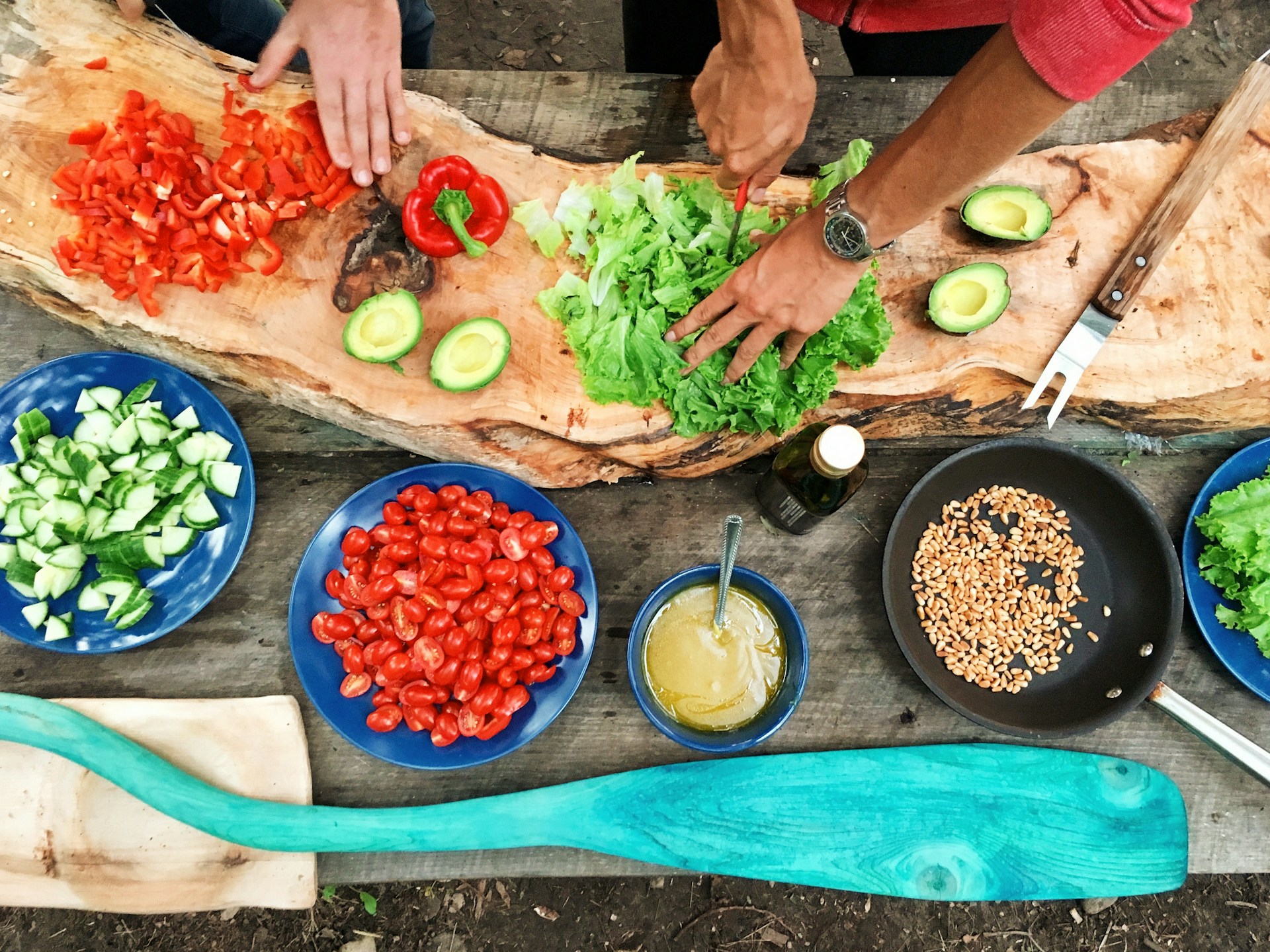
Living off-grid, especially in remote settings, presents unique challenges, one of which is meal preparation. Without access to conventional utilities like electricity and running water, off-grid enthusiasts must rely on alternative energy sources and innovative solutions to cook their meals. This article delves into the intricacies of off-grid cooking, exploring various creative methods, essential tools, and strategies that enable individuals and families to enjoy nutritious and delicious food in remote locations.
Cover photo by Maarten van den Heuvel
The Essence of Off-Grid Living
Off-grid living is a lifestyle choice or necessity for those who wish to minimize their reliance on public utilities and reduce their carbon footprint. It involves sourcing all necessary energy, water, and waste management independently, often using sustainable practices. Cooking off-grid requires careful planning, as it involves not only the preparation of food but also considerations for safety, efficiency, and environmental impact.
Understanding the Off-Grid Kitchen
An off-grid kitchen is a versatile space that can be as simple or complex as one’s needs and resources dictate. It typically includes a cooking system powered by an alternative energy source such as solar, wind, or biofuels; a water sourcing and purification system; and food storage solutions that maintain freshness without refrigeration.
Choosing the Right Cooking System
Selecting the appropriate cooking system is crucial for off-grid living. The choice depends on factors like the availability of resources, personal preferences, and the scale of operation. Here are some popular off-grid cooking systems:
1. Solar Ovens. Harnessing the power of the sun, solar ovens can bake, boil, roast, and steam food with minimal to no additional energy input. They are ideal for locations with ample sunlight and offer the advantage of passive heating.
2. Wood-Burning Stoves. These stoves are efficient and provide warmth in addition to cooking capabilities. They require seasoned wood and can be used with a simple oven attachment or a cookpot.
3. Propane/Gas Stoves. For those who have access to propane or butane gas, these stoves offer the convenience of familiar stove top and oven functions. They are compact, versatile, and efficient but require regular fuel refills.
4. Biofuel Cookstoves. Running on alcohol-based fuels like ethanol or methanol, biofuel cookstoves are a clean and renewable option. They are particularly useful for those who produce their own biofuels from waste materials.
5. Rockets and Rocket Stoves. These highly efficient stoves use small amounts of wood or biomass to create a hot flame and are known for their high combustion efficiency, reducing wood consumption and cooking times.
6. Multi-Fuel Stoves. Capable of using various fuels like wood, charcoal, and liquid fuels, these stoves offer flexibility and are suitable for different environments and situations.
Essential Tools and Equipment
To facilitate off-grid cooking, a well-equipped kitchen is essential. Here are some indispensable tools and equipment:
1. Solar Oven Accessories. Reflective foil, glass panels, and an oven box to enhance the performance of solar ovens.
2. Stove or Cooking Device. The chosen cooking system, complete with pots, pans, and utensils suitable for the fuel type.
3. Water Collection and Purification System. Containers for collecting rainwater or surface water, and purification methods like boiling, filtration, or chemical treatment.
4. Food Storage Solutions. A root cellar, a cooler with frozen gel packs, or food storage items like salt, sugar, and dried goods that have long shelf lives.
5. Multitools and Knives. For preparation, cleaning, and other tasks around the kitchen or campsite.
6. Grain Mills and Food Processors. To grind grains for baking or to prepare meals with fresh ingredients.
7. Dehydrators. For preserving food by removing moisture, extending its shelf life without refrigeration.
Meal Planning and Preparation
Meal planning in an off-grid setting requires creativity and resourcefulness. Here are some strategies for meal preparation:
1. Seasonal Menus. Plan meals around locally available seasonal produce to ensure freshness and minimize the need for storage.
2. Preserving Food. Utilize methods like canning, drying, fermenting, and smoking to preserve food for longer periods.
3. Meal Composition. Design balanced meals with a variety of nutrients by combining proteins, carbohydrates, fats, vitamins, and minerals from available ingredients.
4. Food Substitutions. Learn to substitute ingredients that are not readily available with local alternatives (e.g., using dandelion greens instead of spinach).
5. Recipe Adaptation. Modify recipes to use less water or alternative cooking methods, and to accommodate the ingredients you have on hand.
Innovative Cooking Techniques
Off-grid cooking often necessitates innovative techniques to optimize resource use and meal outcomes. Here are some techniques that can be employed:
1. Baking with Solar Ovens. Utilizing solar ovens for baking bread, cakes, or casseroles, which can be a set-and-forget process on a sunny day.
2. Pressure Cooking. Using a multifuel stove with a pressure cooker attachment to save fuel and reduce cooking times.
3. Slow Cooking. Employing a slow cooker or Dutch oven for stews, soups, and braises that develop flavor over time.
4. Cold Preparation. For dishes that don’t require cooking, like salads, sandwiches, and raw vegetable platters, prioritize fresh ingredients and proper food handling to ensure safety.
5. No-Heat Cooking. Exploring recipes that use natural chemical reactions (like soda bread) or passive heat from the environment (like chilling foods in a cooler with ice).
6. Dehydration and Rehydration. Dehydrating foods to reduce their weight and volume, then rehydrating them when ready to eat.
Sustainable Practices for Off-Grid Cooking
Sustainability is at the core of off-grid living. Here are some sustainable practices to consider:
1. Biochar Utilization. Using biochar as a cooking medium can improve soil health and enhance crop yields, creating a closed-loop system.
2. Composting Food Scraps. Turning kitchen waste into compost for garden use, reducing landfill waste and enriching the soil.
3. Water Conservation. Minimizing water usage by collecting rainwater, using greywater for irrigation or flushing toilets, and optimizing washing and cooking practices.
4. Energy Efficiency. Choosing energy-efficient cooking appliances and practicing energy conservation by insulating your cookhouse and using it strategically during peak sunlight hours or calm weather conditions.
5. Renewable Energy Integration. Installing solar panels, small wind turbines, or other renewable energy systems to provide a steady energy supply for cooking needs.
Challenges and Solutions in Off-Grid Cooking
Off-grid cooking presents unique challenges that require innovative solutions. Here are some common issues and their potential solutions:
1. Limited Fuel Supply. Use efficient stoves, alternative fuels, or a combination of fuels to extend your cooking capacity.
2. Inconsistent Weather. Design your kitchen to accommodate varying weather conditions, and choose cooking systems that can work under different circumstances.
3. Electricity Dependence. Invest in battery-powered appliances, solar generators, or other off-grid power solutions for any electric needs.
4. Water Scarcity. Implement water collection and conservation measures, and explore alternative purification methods like UV light or solar distillation.
5. Food Storage Limitations. Use root cellars, dry storage areas, or food preservation techniques to extend the shelf life of perishables.
6. Nutritional Balance. Plan meals carefully to ensure a balanced diet, incorporating a variety of local and stored foods.
Conclusion
Off-grid cooking is an art that combines the necessities of sustenance with the joys of creativity and self-reliance. It requires careful planning, resourcefulness, and a willingness to adapt to your environment. By choosing the right cooking system, equipping yourself with essential tools, meal planning effectively, employing innovative techniques, and practicing sustainable living, you can enjoy a diverse and nutritious diet while respecting the natural world around you.
The off-grid lifestyle is not just about survival; it’s about thriving in harmony with nature. With the right mindset and approach, off-grid cooking can be a rewarding and fulfilling aspect of your sustainable living practices. Embrace the challenges, learn from each experience, and enjoy the bountiful flavors that come from cooking off the grid.
As we’ve explored the multifaceted world of off-grid cooking, it’s clear that with the right knowledge and tools, anyone can rise to the occasion and create delicious, nourishing meals in even the most remote or self-sufficient settings. The key lies in adapting to your environment, embracing the community of like-minded individuals, and continually seeking out new ways to enhance your off-grid culinary journey.


